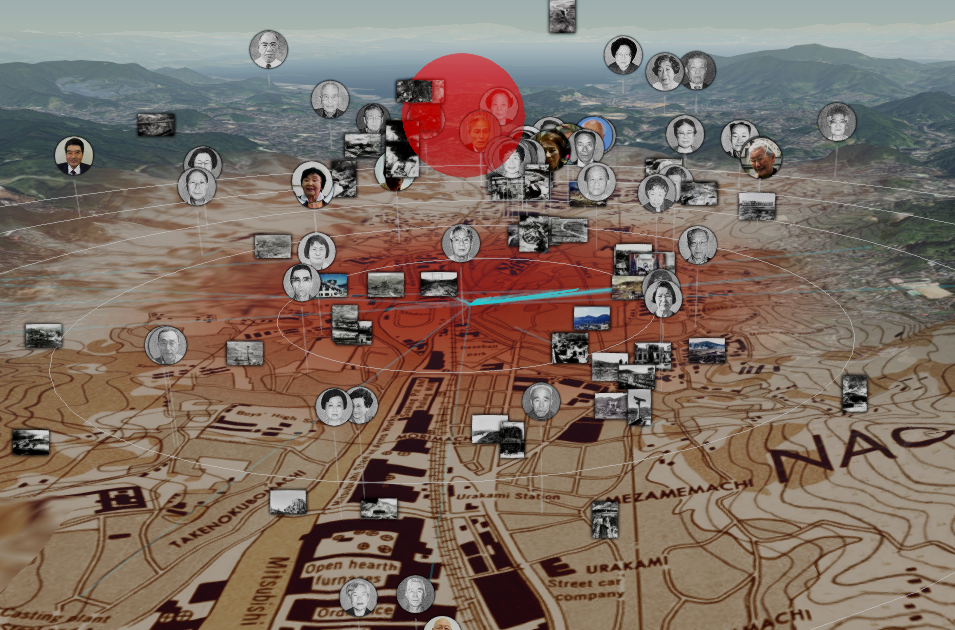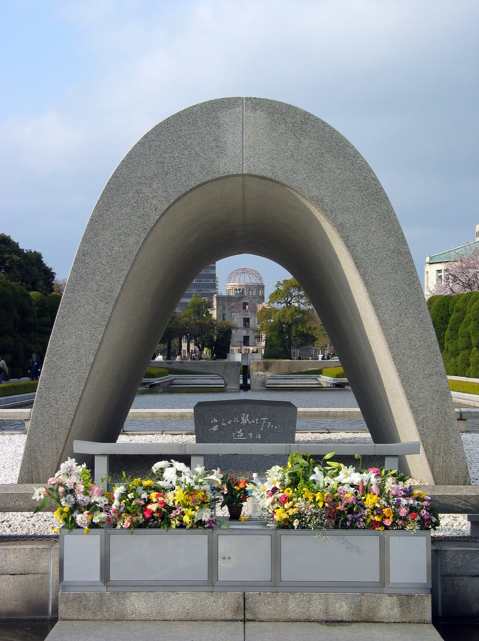Since the late 1940s, Hiroshima and Nagasaki have been pushing back against the culture of “dark tourism” that began almost as soon as the atomic bombs exploded. American military tourism promoted the cities as nuclear wastelands that showcased the “mighty power of the bomb.” Sites such as the Hiroshima Peace Memorial Park and Museum, the Nagasaki Atomic Bomb Museum, and the Nagasaki Peace Park are dedicated to educating the public about the impact of the bombs and nuclear proliferation. However, Hiroshima officials worry that many tourists visit to view the damaged artifacts without grasping the humanitarian impact of nuclear weapons. One “dark tourism” website offers tips for taking the best photos with the ruins of the former Hiroshima Prefectural Industrial Promotion Hall, now the Atomic Bomb Dome–calling it the “Eiffel Tower” of dark tourism. Like many other historic sites of tragedy, Hiroshima and Nagasaki face questions of bridging compassionate understanding with a devastating history.
As the global political climate changes, those devoted to pacifism worry that Japan’s stance on nuclear disarmament has begun to fade. Some hibakusha–survivors of the atomic bombs, such as Keiko Ogura–devote their lives to communicating the human consequences of nuclear weapons. As the hibakusha age, they fear that these cities’ tragic history will be forgotten. A number of initiatives by Japanese schoolchildren, universities, and filmmakers use digital technology to preserve memories, educate about the effects of atomic weapons, and highlight perspectives of peace rather than destruction.
Apps
 In 2017, the City of Hiroshima funded the development of a tourist smartphone app that engages visitors with information about the city before the United States dropped the atomic bomb on August 6, 1945. The program offers four walking and bus tours, available in English or Japanese, that lead users to various memorials, cultural centers, museums, and buildings where they can view scenes of the city before and after the bombing.
In 2017, the City of Hiroshima funded the development of a tourist smartphone app that engages visitors with information about the city before the United States dropped the atomic bomb on August 6, 1945. The program offers four walking and bus tours, available in English or Japanese, that lead users to various memorials, cultural centers, museums, and buildings where they can view scenes of the city before and after the bombing.
The app provides important context about Hiroshima’s past. However, some users may identify gaps in the story. Chia-Le Chen at Taipei National University of the Arts elaborates, “None of the four walking routes include any of the military history of Hiroshima, which contained an army base. Japan has been often criticized for not acknowledging or educating their children about the violence and horrors inflicted by the Imperial Army of Japan during the war.” Chen echoes what scholars have termed “victim consciousness,” where Japan’s post-war identity concentrated on the suffering from the atomic bombs rather than addressing the country’s role as aggressors in World War II.
In a similar vein, another interactive mapping program called “Kioku no Kaito,” or “Rebooting Memories,” launched in 2016 (see the second photo middle right). Spawned out of a conference for Japanese and American high school students, the application intends to create a digital community linking younger generations with survivors through interactive mapping. Hidenori Watanave, a professor at the University of Tokyo Graduate School of Interdisciplinary Information Studies, collaborated with senior high school students in Hiroshima to build on resources already collected by the Nagasaki and Hiroshima Digital Archives (see the third photo bottom right). Students helped add to the archives by interviewing hibakusha and collecting old photographs to digitally reconstruct the cities before the bombings. Pinpoints on the map plotted photographs and survivor testimonies related to each area. The app aims to engage people around the world with the realities of nuclear warfare and provide an online space to share global messages for peace and nuclear abolition.
Virtual Reality
A combination of 3-D modelling, archival photographs, and GPS allows primary school students in Nagasaki the opportunity to use virtual reality technology to explore the city in the aftermath of the atomic attack on August 9, 1945. The journey includes identifiable sites within a 1640-foot radius around the hypocenter of the bomb, such as the Urakami Cathedral and Shiroyama Elementary School. Users track their movements by walking around modern Nagasaki using a tablet, and then the same path is recreated using 3-D glasses. “By walking the area oneself and comparing then and now, the two are connected and one can better understand the damage,” Takashi Fujiki, Nagasaki University professor of educational engineering, explained to the Mainichi newspaper.
The project was developed by a team at Nagasaki University as a way to compare modern-day Nagasaki to the city devastated by the bomb. In 2016, the university team tested the VR technology with ten fifth-graders from Kayaki Elementary School in Nagasaki.
In August 2018, Hiroshima launched its own virtual reality program, created by a computational skill research club at Fukuyama Technical High School. Instead of a GPS tour, the students constructed a five-minute virtual reality experience that portrays the sights and sounds of Hiroshima before, during, and after the bomb. Constructed through research with postcards, photographs, and interviews with survivors, the scene walks users along the Motoyasu River prior to the bombing. Users view the Hiroshima Prefectural Industrial Promotion Hall before the atomic blast causes the surrounding buildings to disintegrate.
“VR experiences are intimate worlds that we can visit in a way that makes them, by definition, a modern kind of memorial,” explains Saschka Unseld, a filmmaker who recently unveiled a virtual reality program at the 2018 Tribeca Film Festival in New York. Titled “The Day the World Changed,” Unseld and fellow filmmaker Gabo Arora wanted to foster an intimate relationship between viewers and the victims of nuclear weapons, and explore how virtual reality can promote conversations around difficult historical issues.
Unseld’s and Arora’s “Interactive Virtual Reality Memorial” is conveyed in three installments and presented similar to an immersive documentary. The first chapter addresses what led the United States to develop and drop the atomic bomb on Hiroshima. The second places users in the ruins of the Atomic Bomb Dome to view the aftermath of the bombing, while the third situates viewers in the global race for more atomic weapons. “Our intention with this work is to give voice to those victims of nuclear war, asking the world to face this shared history, and to recognize the true horror of these weapons,” explained Arora. Unseld continues, “By placing the general public inside the ruins of a tragic event like Hiroshima, we hope to activate a groundswell of support for the abolition of nuclear weapons.”
Looking to the Future
Many of these digital programs were conceptualized with the knowledge that “history decays over time,” and memories must be actively revived in order to nurture a legacy of pacifism. The hibakusha are aging and will soon be gone—but many of the same social and political anxieties about nuclear weapons remain. As younger generations shift to a more digital focus on education, historical institutions, scholars, and educators have responded by offering interactive narratives online and involving students in manufacturing their own tools for learning. Much of the apps developed around Hiroshima and Nagasaki are still ongoing or too new to be definitively evaluated. However, it is clear that advances in technology have continued to spur innovative ways to connect with tragic histories.





